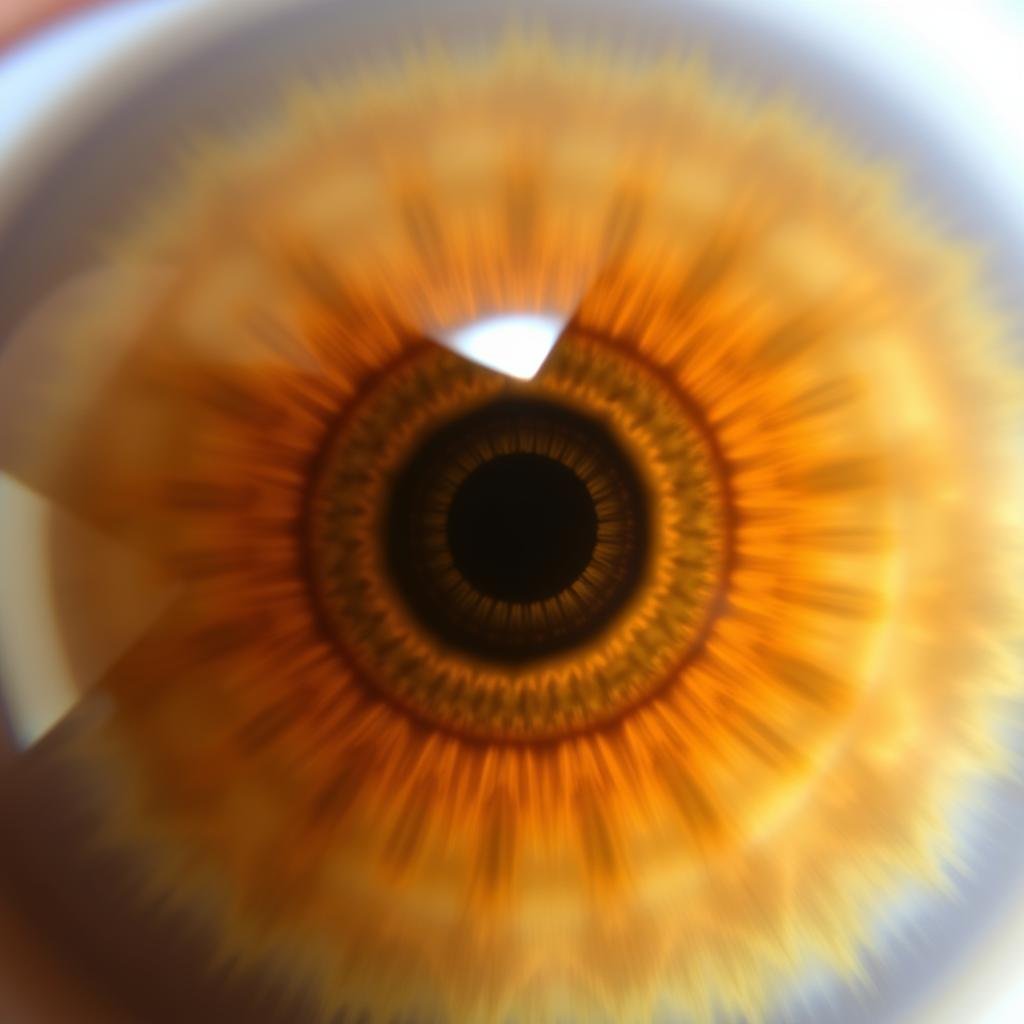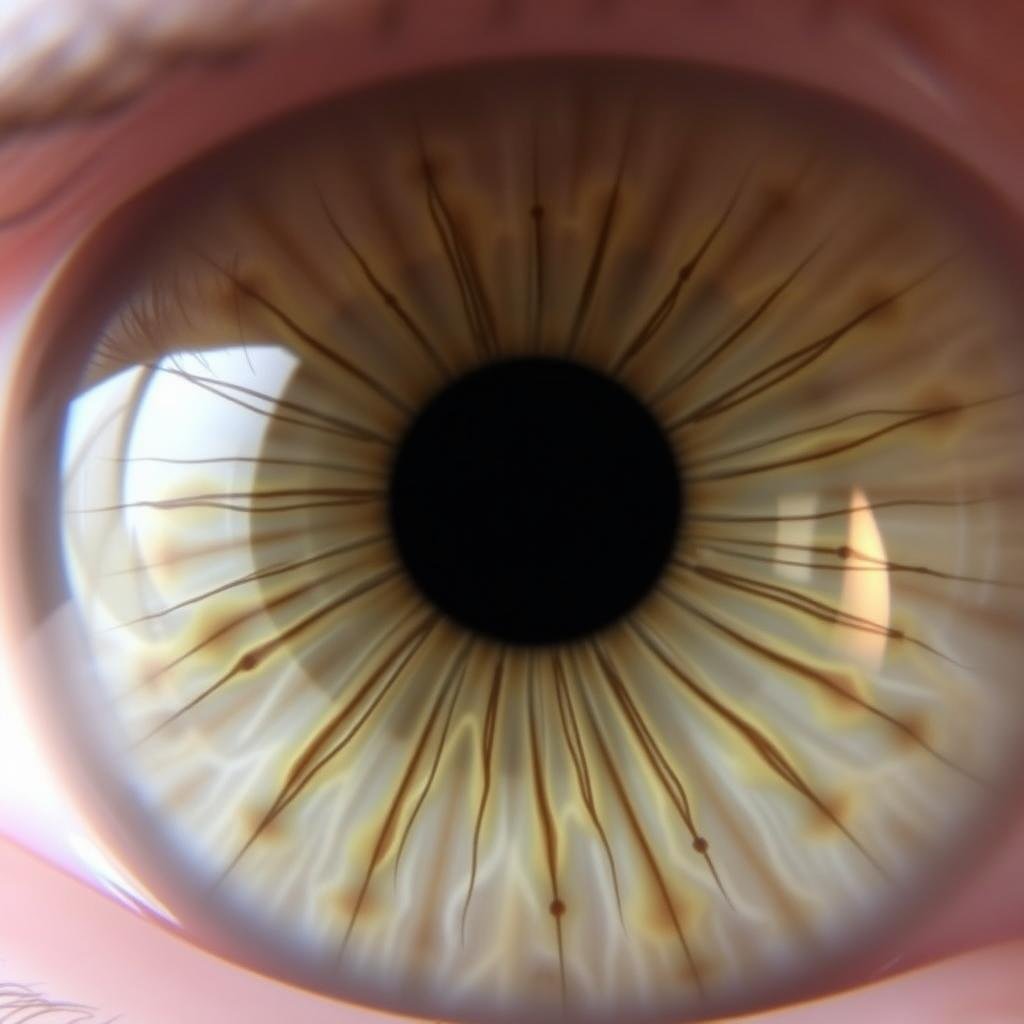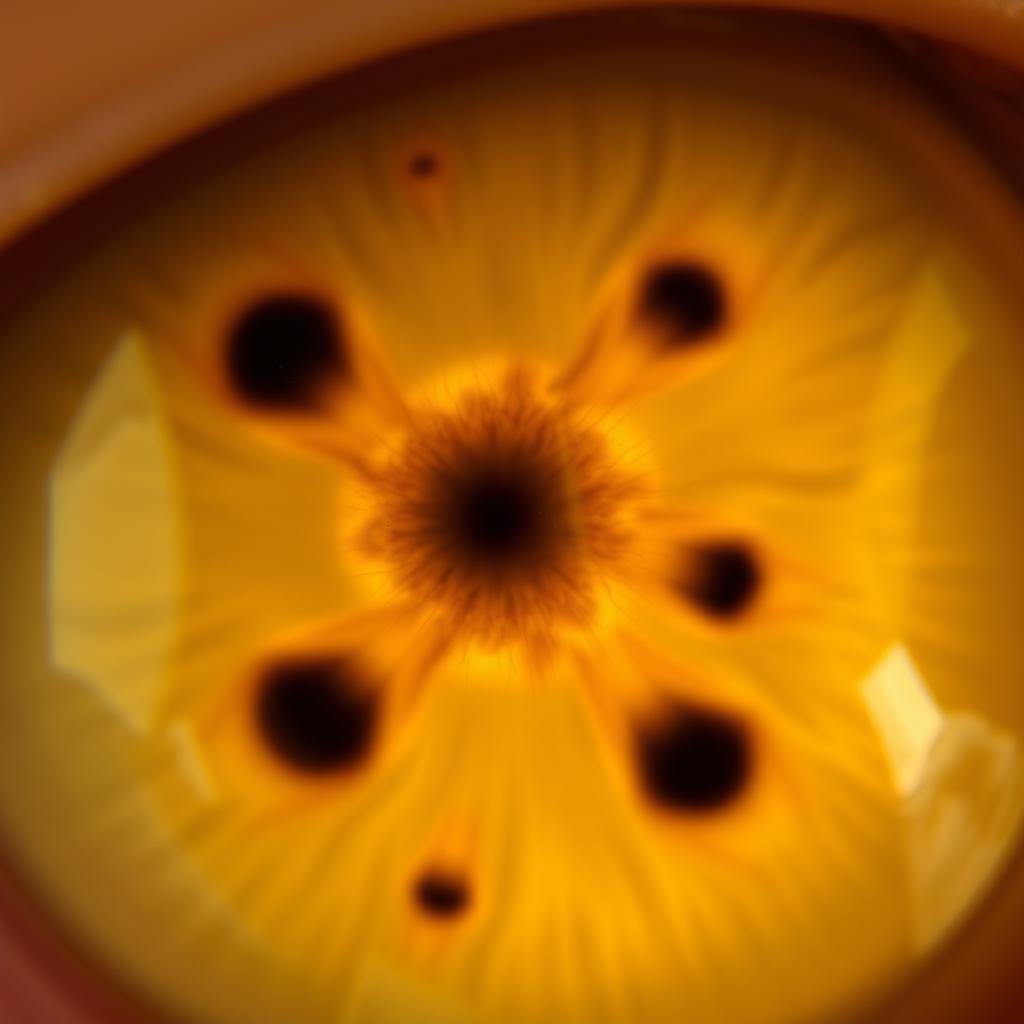Iridology stands at the intersection of alternative medicine and eye analysis, offering a unique approach to health assessment. Practitioners known as iridology doctors examine the iris—the colored part of your eye—to identify patterns, colors, and markings that may indicate health conditions elsewhere in the body. This comprehensive guide explores the world of iridology, from its fundamental principles to finding qualified practitioners who can perform this alternative diagnostic technique.
Understanding Iridology: The Study of the Iris
Iridology is a holistic practice based on the theory that each organ in the human body corresponds to a specific region in the iris. When there’s illness or weakness in the body, iridologists believe changes will occur in the matching section of the eye.
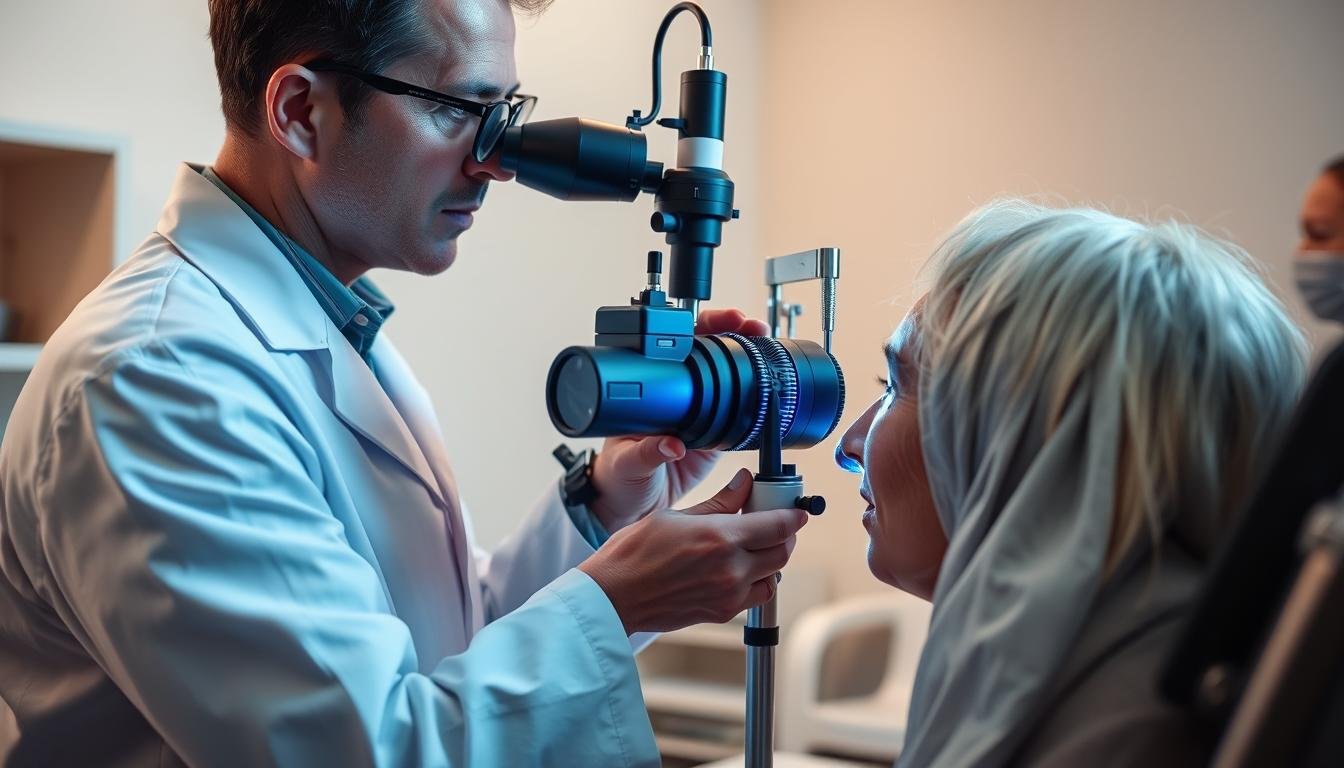
An iridology doctor examining a patient’s iris using specialized equipment
The practice is founded on the concept that the eyes are not only “windows to the soul” but also mirrors reflecting the body’s overall health. Iridology doctors use detailed iris charts that divide the iris into approximately 60 zones, each corresponding to different parts of the human body.
The History and Development of Iridology
While some believe iridology has ancient roots in Egypt, China, and India dating back 3,000 years, modern iridology is often credited to Hungarian physician Ignaz von Peczely in the 1800s. As the story goes, von Peczely noticed changes in an owl’s iris after the bird suffered a broken leg, leading him to study how illnesses affect iris appearance.
In the 1950s, American chiropractor Bernard Jensen further developed the practice by creating detailed iridology charts that are still widely used today. These charts map specific areas of the iris to corresponding body systems and organs.
Key Responsibilities of an Iridology Doctor
Iridology doctors perform several specialized functions that distinguish them from conventional eye care professionals. Their focus extends beyond eye health to using the iris as a diagnostic tool for the entire body.
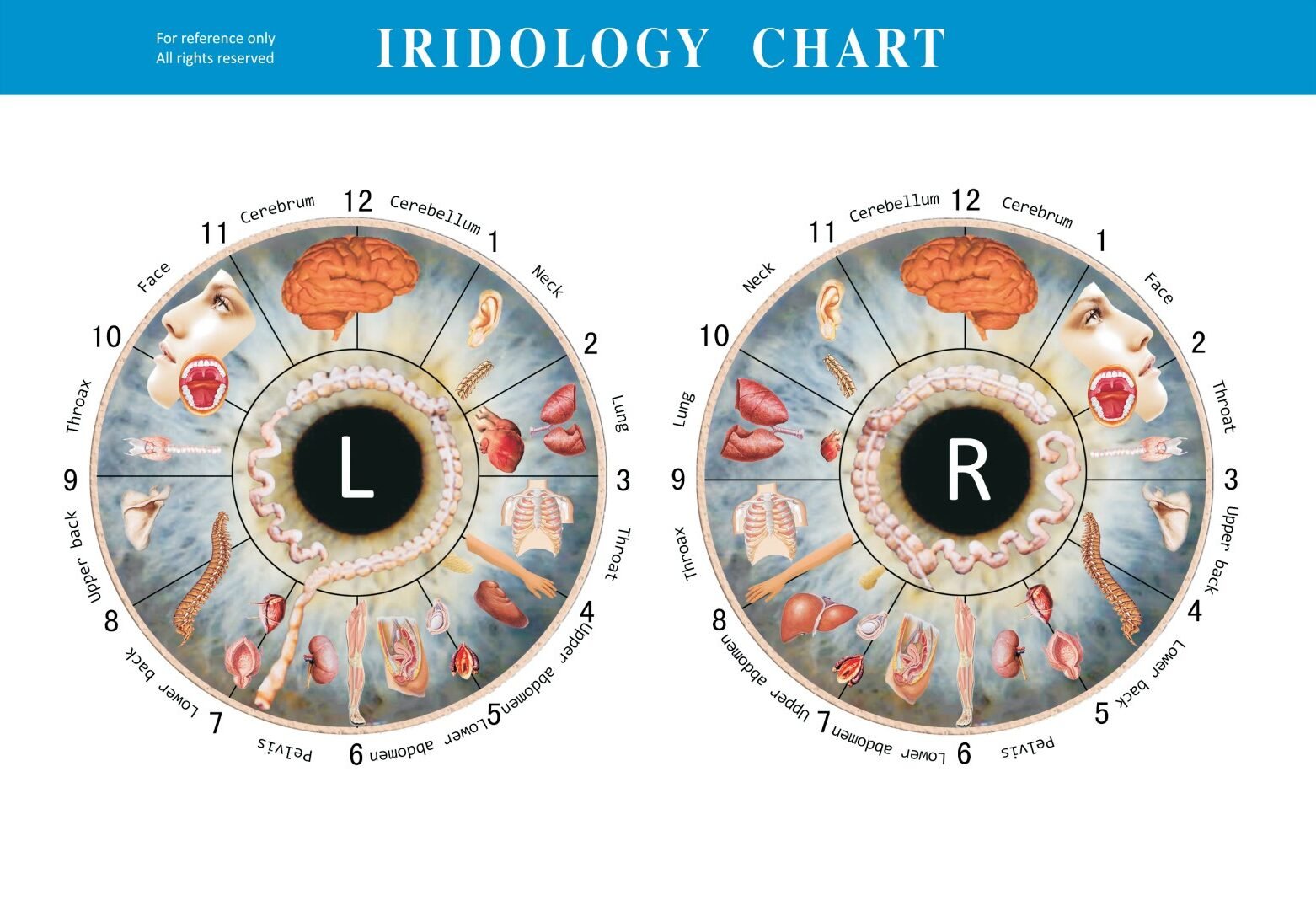
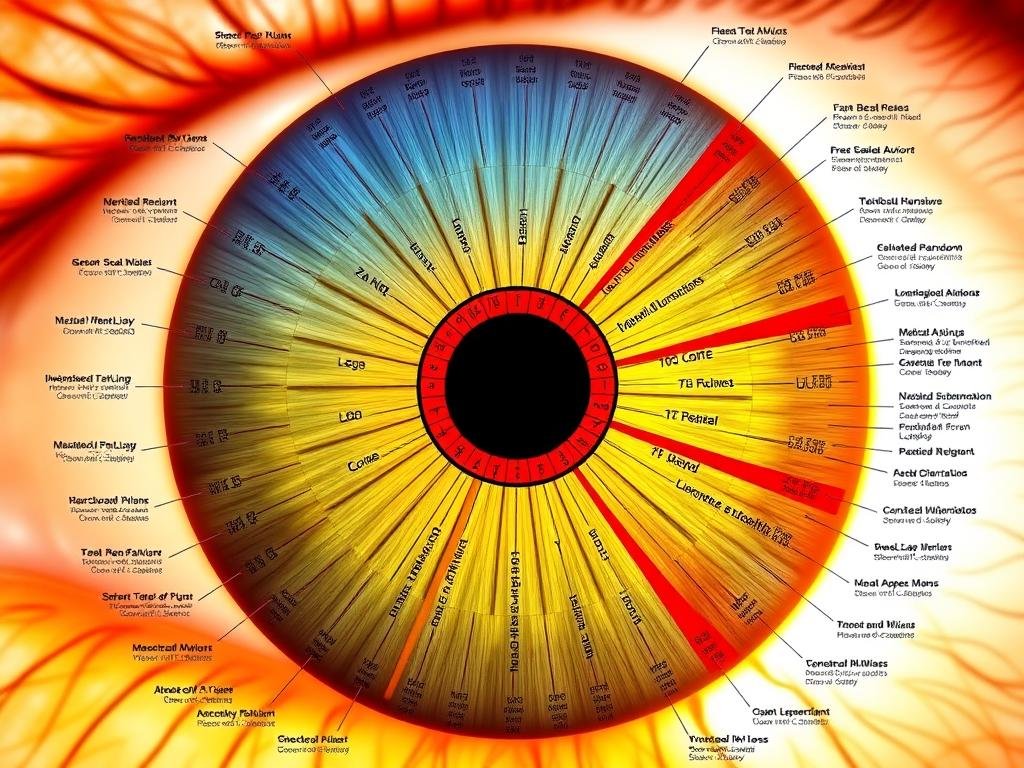
Standard iridology chart mapping iris zones to corresponding body organs and systems
Iris Examination and Analysis
The primary responsibility of an iridology doctor is to conduct thorough iris examinations. Using specialized equipment like cameras, flashlights, and microscopes, they carefully observe the iris to detect tissue changes, pigmentation patterns, and structural irregularities.
During an examination, the iridologista looks for specific markings, colors, and patterns in the iris that may indicate health conditions. For example, a dark spot in a particular zone might suggest issues with the corresponding organ, while white markings could indicate inflammation or stress in specific body systems.
Health Assessment and Recommendations
After analyzing the iris, iridology doctors provide clients with a health assessment based on their observations. They may identify:
- Areas of inflammation in the body
- Nutritional deficiencies
- Stress patterns and their physical manifestations
- Potential weaknesses in specific organs or systems
- Digestive function issues
- Toxin accumulation
Based on these assessments, iridology doctors often recommend lifestyle changes, dietary adjustments, or natural supplements to address identified issues. However, it’s important to note that iridology is considered a complementary approach rather than a replacement for conventional medical diagnosis.
Discover How Holistic Health Assessment Could Benefit You
Curious about what an iridology session might reveal about your health? Connect with a certified practitioner for a consultation and learn more about this alternative assessment method.
Find an Iridology Doctor Near You
Benefits and Controversies Surrounding Iridology
Like many alternative health practices, iridology has both devoted followers and skeptical critics. Understanding both perspectives can help you make informed decisions about incorporating this practice into your health journey.
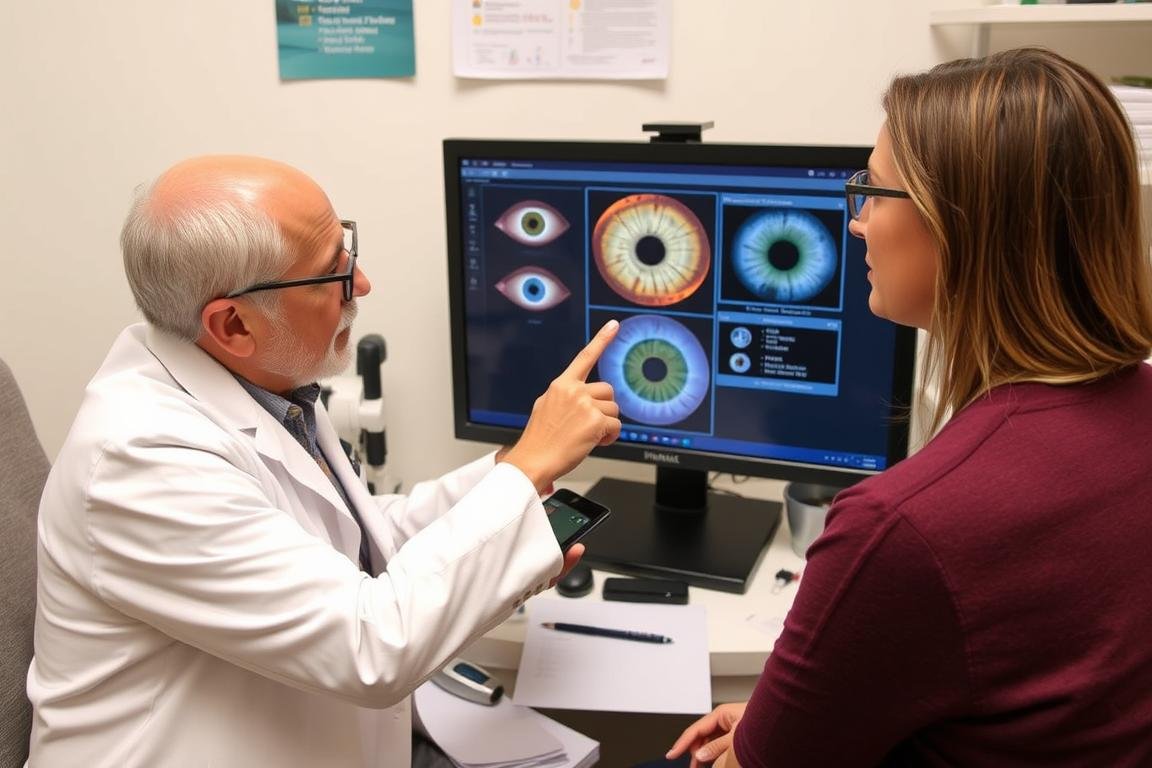
An iridology consultation where findings are discussed with the patient
Benefícios potenciais
- Método de Avaliação Não Invasiva
- May detect health issues before symptoms appear
- Holistic approach considering the whole body
- Can complement conventional medical care
- Encourages preventative health measures
Limitations and Concerns
- Limited scientific validation in clinical studies
- Não reconhecido por estabelecimentos médicos convencionais
- Risk of misdiagnosis if used as sole diagnostic method
- Inconsistent standards in practitioner training
- May delay proper medical treatment for serious conditions
Scientific Perspective
From a scientific standpoint, iridology faces significant challenges. Multiple controlled studies have failed to demonstrate that iridologists can consistently detect diseases through iris examination. A notable study published in the Journal of the American Medical Association found that iridologists could not reliably identify patients with kidney disease by examining photographs of their irises.
Critics also point out that the iris structure remains largely stable throughout life, with minimal changes occurring after childhood. This contradicts the fundamental premise that the iris actively reflects changing health conditions.
Nota importante: Iridology should not be used as a substitute for conventional medical diagnosis and treatment. Always consult with qualified healthcare providers for serious health concerns.
Training and Certification for Iridology Doctors
Unlike conventional medical specialties, iridology doesn’t have a standardized, universally recognized certification process. However, several organizations offer training programs and certifications for aspiring iridology practitioners.
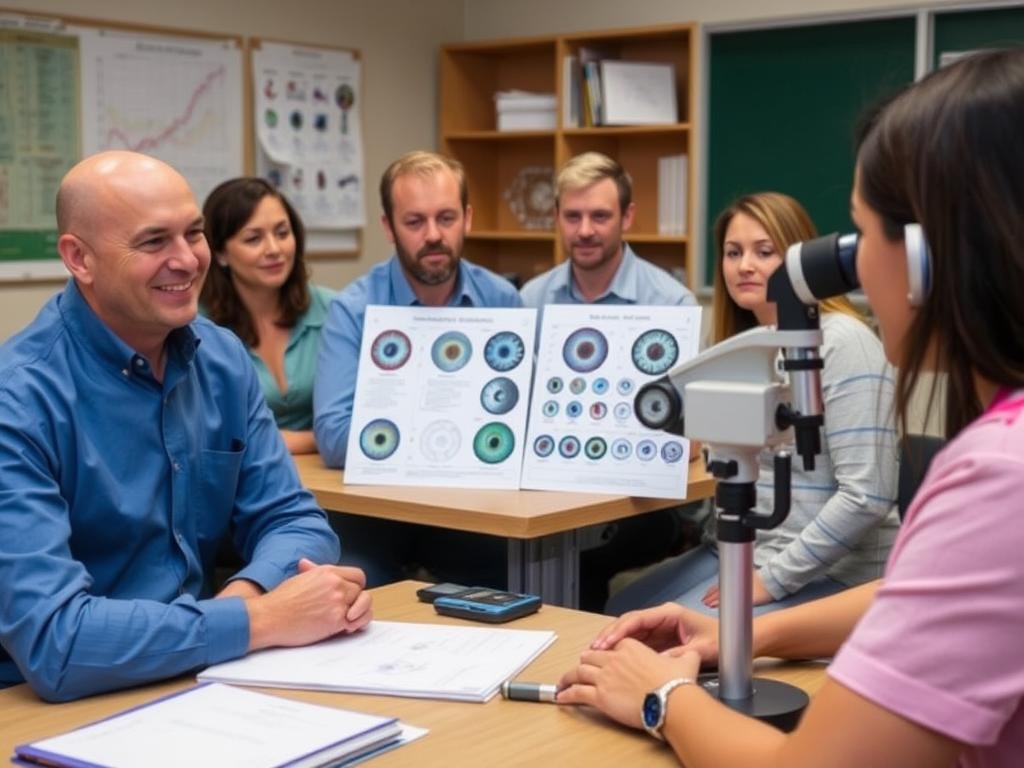
Students learning iris analysis techniques during professional iridology training
Educational Pathways
Most iridology doctors begin with a foundation in a related health field such as:
- Naturopathy
- Chiropractic medicine
- Herbalism
- Nutrição
- Traditional Chinese Medicine
From there, they pursue specialized training in iridology through certificate or diploma programs. These programs typically cover iris anatomy, chart interpretation, case analysis, and clinical applications.
Certification Organizations
Several organizations provide iridology certification, including:
Associação Internacional de Profissionais de Iridologia (IIPA)
Offers comprehensive certification programs with multiple levels of achievement and continuing education requirements.
Guild of Naturopathic Iridologists International
Provides training with emphasis on integrating iridology with naturopathic principles and practices.
Institute of Applied Iridology
Focuses on practical applications and clinical case studies in their certification process.
Certification typically requires completing coursework, passing examinations, and documenting case studies. Many organizations also require continuing education to maintain certification.
How to Choose a Qualified Iridology Doctor
If you’re interested in consulting an iridology doctor, it’s important to select a qualified practitioner who adheres to ethical standards and has proper training.

Researching credentials is essential when selecting an iridology practitioner
Essential Qualifications to Look For
| Qualification |
Why It Matters |
How to Verify |
| Certificação |
Ensures the practitioner has completed structured training |
Ask for certification details and check with issuing organization |
| Experience |
Indicates practical knowledge and refined skills |
Ask about years in practice and number of clients served |
| Background in Health |
Provides foundational knowledge of anatomy and physiology |
Review educational background and additional credentials |
| Professional Membership |
Suggests commitment to ethical standards and continuing education |
Check membership status with professional organizations |
| Client Reviews |
Reflects client satisfaction and practitioner effectiveness |
Read testimonials and online reviews from multiple sources |
Questions to Ask Before Your First Appointment
When contacting potential iridology doctors, consider asking these questions:
- What is your training and certification in iridology?
- How long have you been practicing iridology?
- What other health qualifications do you hold?
- What can I expect during an iridology session?
- How do you integrate findings with conventional medical care?
- What are your fees and what is included in a consultation?
Ready to Experience Iridology?
Find certified iridology practitioners in your area who meet the highest standards of training and ethical practice.
Search Qualified Practitioners
Case Studies: Understanding Iris Analysis in Practice
To better understand how iridology doctors interpret iris signs, let’s examine some common patterns they look for and what these might indicate according to iridology principles.
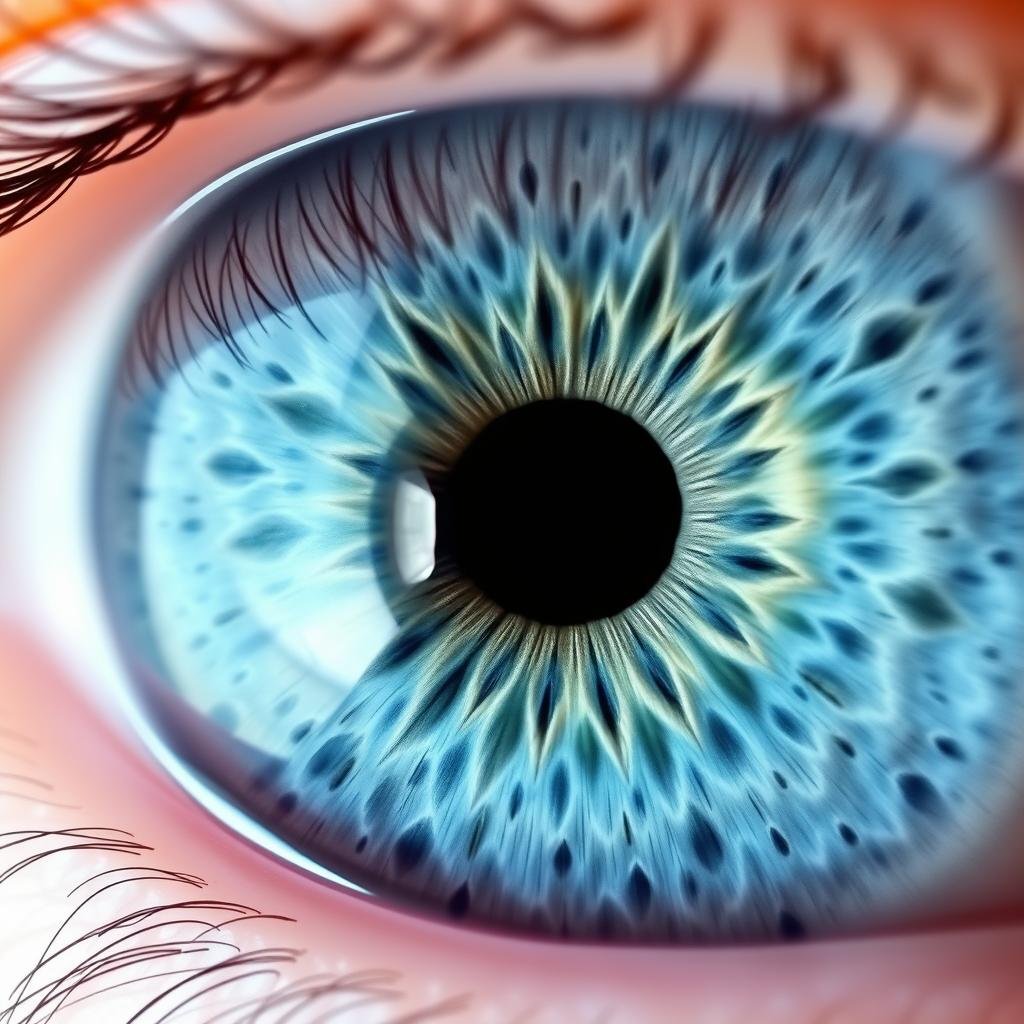
Close-up of an iris showing patterns analyzed by iridology doctors
Common Iris Signs and Their Interpretations
Iris Rings (Nerve Rings)
Circular lines that appear in the iris may indicate nervous tension and stress. Multiple rings could suggest chronic stress patterns affecting the nervous system.
Sulcos radiais
Spoke-like lines extending from the pupil may indicate digestive system issues. Their depth and location help iridologists determine specific digestive concerns.
Manchas de pigmento
Dark spots in specific iris zones may indicate issues with corresponding organs. The color, size, and location guide the iridologist’s assessment.
The Iris Chart: Mapping Body Systems
Iridology doctors rely on detailed iris charts that divide each iris into zones corresponding to different body parts. The right iris generally represents the right side of the body, while the left iris corresponds to the left side.


Comprehensive iridology chart showing how different iris zones correlate to body organs and systems
Key areas on a typical iridology chart include:
- Digestive system (central area around pupil)
- Circulatory system (mid-iris)
- Lymphatic system (outer iris)
- Nervous system (throughout specific pathways)
- Endocrine glands (specific points throughout iris)
- Elimination organs (lower portions of iris)
Iridology vs. Conventional Ophthalmology: Understanding the Differences
While both iridology doctors and ophthalmologists examine the eyes, their approaches, methodologies, and purposes differ significantly.
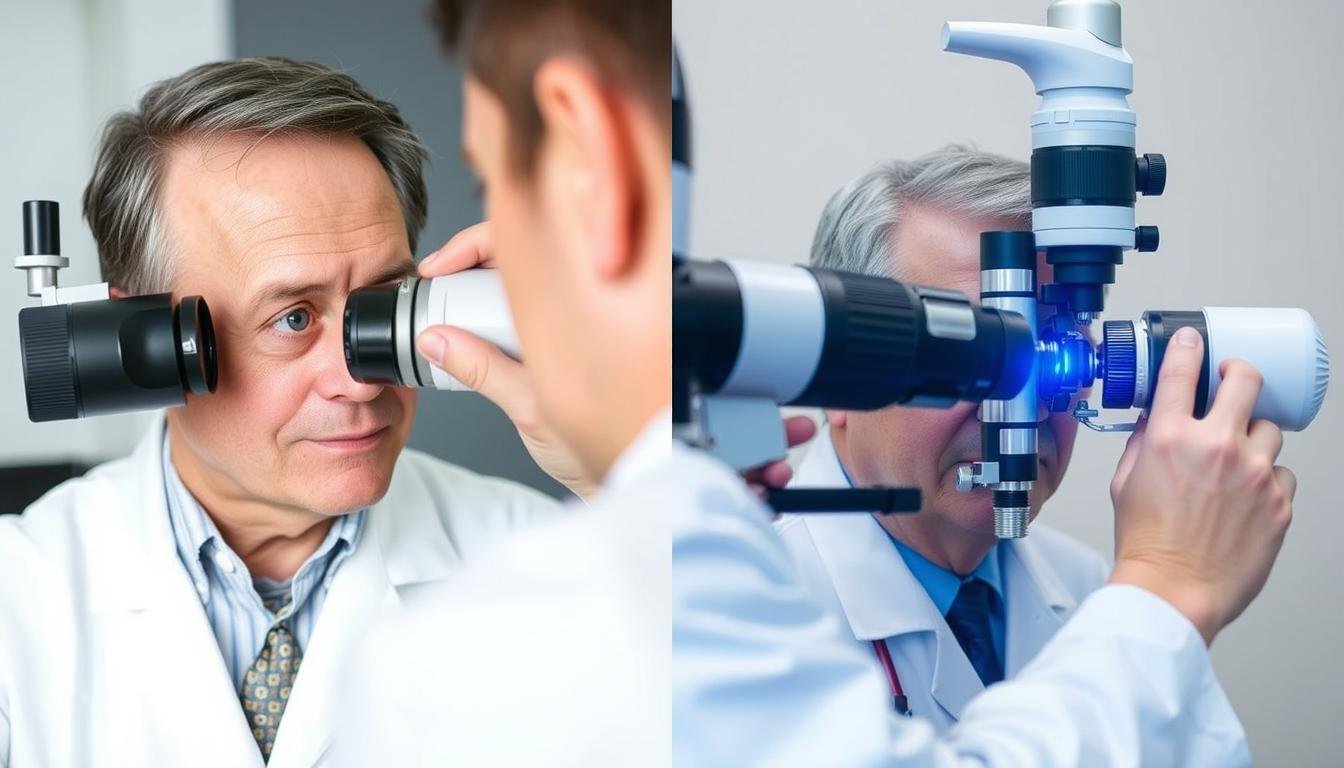
Comparison between iridology examination (left) and conventional ophthalmology exam (right)
| Aspecto |
Iridology Doctor |
Ophthalmologist |
| Primary Focus |
Whole-body health assessment through iris patterns |
Eye health and vision disorders |
| Treinamento |
Certificate or diploma programs in iridology |
Medical degree plus specialized residency (8+ years) |
| Abordagem diagnóstica |
Observes iris patterns to identify potential health issues throughout the body |
Uses various tests to diagnose specific eye conditions |
| Treatment Capability |
Provides recommendations for lifestyle, diet, supplements |
Prescribes medications, performs surgery, treats eye diseases |
| Validação científica |
Limited scientific evidence supporting effectiveness |
Evidence-based practices supported by clinical research |
| Supervisão regulatória |
Varies by country; often minimal regulation |
Strictly regulated medical profession |
It’s worth noting that some health conditions can indeed be detected through eye examination by both practitioners, though through different methods and interpretations. For example, diabetes can cause visible changes in the blood vessels of the retina, which ophthalmologists monitor. Iridologists might observe changes in iris coloration or structure in areas they associate with pancreatic function.
Frequently Asked Questions About Iridology Doctors
Quanto custa uma sessão de iridologia?
Iridology consultation fees vary widely depending on location, practitioner experience, and session length. Initial consultations typically range from to 0, with follow-up sessions often costing less. Some practitioners include iridology as part of a broader holistic health assessment, which may affect pricing.
Is iridology covered by health insurance?
Most conventional health insurance plans do not cover iridology consultations. However, some flexible spending accounts (FSAs) or health savings accounts (HSAs) may allow reimbursement for alternative health services. Check with your specific insurance provider or account administrator for details.
What happens during an iridology session?
A typical iridology session begins with a health history discussion. The practitioner then examines your irises using specialized equipment like magnifying lenses or digital cameras. They may take photographs for detailed analysis. After examining your iris patterns, the iridology doctor will discuss their observations and provide recommendations based on their findings.
A iridologia pode diagnosticar doenças específicas?
Iridology is not designed to diagnose specific diseases in the way conventional medicine does. Instead, it aims to identify areas of weakness or stress in the body that might indicate imbalances or potential health concerns. Responsible iridology doctors will not claim to diagnose medical conditions and should refer clients to medical doctors when appropriate.
Is there any preparation needed before seeing an iridology doctor?
Little preparation is typically required. Some practitioners recommend avoiding contact lenses for 24-48 hours before your appointment if possible. It’s helpful to compile a list of your health concerns, current medications, supplements, and relevant medical history to share during your consultation.
Conclusion: Approaching Iridology with Informed Perspective
Iridology offers an intriguing approach to health assessment through the examination of iris patterns. While many people find value in this holistic practice, it’s important to approach it with a balanced perspective that acknowledges both its potential benefits and limitations.

A collaborative approach combining alternative and conventional healthcare perspectives
For those interested in exploring iridology, consider these recommendations:
- Seek practitioners with proper training and certification
- Use iridology as a complementary approach, not a replacement for conventional medical care
- Maintain open communication between all your healthcare providers
- Approach health claims critically and research thoroughly
- Consider iridology as one tool in a comprehensive health management strategy
Whether you’re drawn to iridology out of curiosity or seeking alternative health insights, an informed approach will help you make the most of what this practice has to offer while ensuring your overall healthcare needs are appropriately addressed.
Take a Balanced Approach to Your Health
Interested in exploring holistic health options while maintaining conventional medical care? Connect with practitioners who support an integrated approach.
Find Holistic Health Resources




















